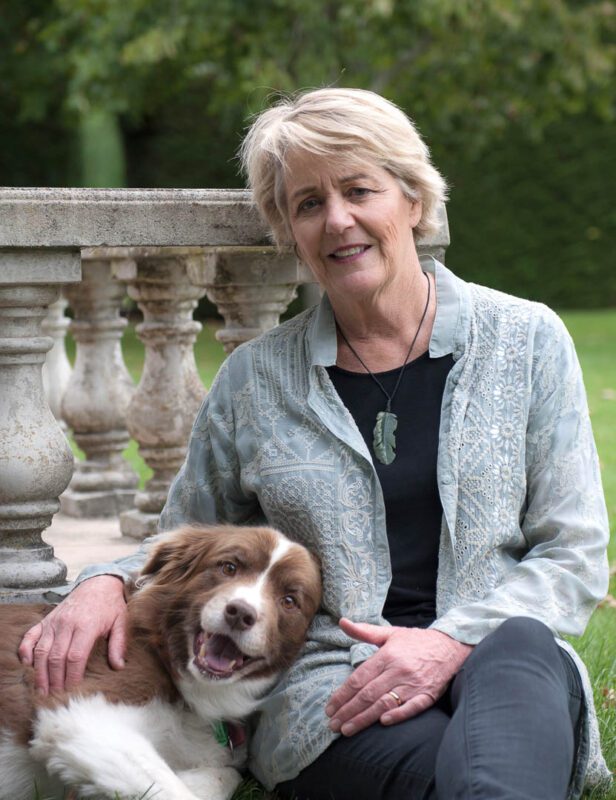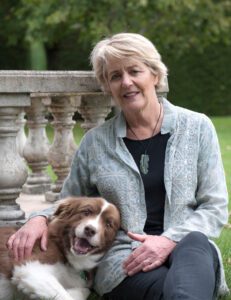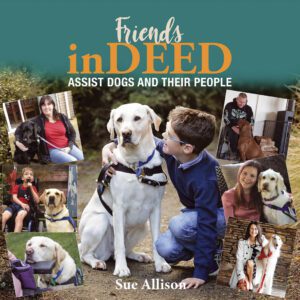
In dogs we trust
The bond between human and dog is unmatched. And when a dog’s role is to help their person, intriguing tales are to be told. Love for animals was Sue Allison’s inspiration to write the book Friends Indeed: Assist Dogs and Their People. However, it was the human connections that captured her heart.

The 63-year-old Christchurch journalist and freelance writer lives on a lifestyle block in North Canterbury where she and her husband have raised four children as well as a menagerie of animals. “It’s a city girl’s dream,” she says. “So writing about animals as well is nirvana!”
Sue has written two children’s books and recently Secrets of Small Gardens published by New Holland, who was keen to publish her next inspiration.
“I have a background in anthropology. I’m not a newshound but I love writing, especially about humans and animals,” says Sue, who chose to write about dogs helping people in a health-related capacity such as sight, hearing and mobility impairment. She travelled around the country interviewing people with assistance dogs.
“Everyone had a story. I thought it would be a hard job choosing which ones to include in the book but everyone I talked to is in it.”
There are 41 chapters, each about a person, a dog, and their bond. The profiles include Cantabrians with heart-warming twists to the waggly, often hilarious, tales.
“People loved telling me the naughty things their ‘goofy’ dogs did when off duty. These are serious stories but there’s plenty of light heartedness.”
Errol from Christchurch certainly attracts children’s attention with a teddy bear riding the back of his guide dog, Prince. When Christchurch musician John Hore got his first guide dog, Brindy, in place of a cane, he felt like he was flying.

The Carnahan family’s life changed when Lady walked through the door to help their son with autism. Young Juno’s reading flourished when she joined the New Brighton library’s Reading to Dogs programme, because “The dog doesn’t notice when I get a word wrong.”
As an animal lover, Sue secretly feared the dogs would have a limited life. “But it was quite the opposite. They have 24/7 company, their own person, and a job. That’s a pretty perfect life for a dog. These dogs are so eager to help their people, and the trainers harness that desire.”
While labradors leap to mind as the most common assistance dogs, there is a growing diversity of breeds. With their amazing sense of smell, spaniels make excellent diabetic detection dogs, while small breeds are perfect for the elderly and there is a move towards dogs such as poodles which don’t shed hair.
Strong and amiable, golden retrievers are great for mobility assistance.
While most assist dogs undergo rigorous training and are bred for their jobs, several dogs in the book are rescue dogs, including three saved from death row at the pound.
“The dogs do so much more than their official roles,” says Sue. “For people with special needs, their dogs are a visible sign of often an invisible disability.
They are also often a portal to more kindness, bringing out the best in everyone and acting as social conduits for people who can feel quite isolated.
These dogs, and their people, are all heroes.”



